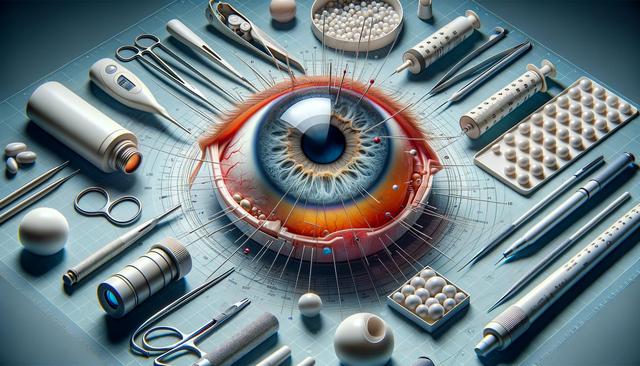What Are Cataracts and Why Do They Occur?
Cataracts form when the natural lens of the eye becomes cloudy, typically due to aging. This cloudiness obstructs light from passing clearly through the lens, resulting in blurred or dim vision. While age-related cataracts are most common, they can also develop due to factors such as prolonged exposure to ultraviolet light, diabetes, eye injuries, or the use of certain medications. In rare cases, babies can be born with congenital cataracts.
Recognizing the symptoms of cataracts is the first step toward addressing the condition. Common signs include:
- Blurry or foggy vision
- Difficulty seeing at night
- Sensitivity to light and glare
- Seeing halos around lights
- Frequent changes in eyeglass prescriptions
When cataracts begin to interfere with daily activities such as reading or driving, surgery is often recommended as the most effective solution.
How Cataract Surgery Works
Cataract surgery replaces the clouded natural lens with a clear artificial intraocular lens (IOL). It’s generally an outpatient procedure that takes less than an hour to complete. The most commonly used technique is phacoemulsification, where ultrasound waves break up the cloudy lens, which is then suctioned out and replaced with the IOL.
There are different types of IOLs available, each with specific features designed to meet various vision needs. Some lenses focus on improving distance vision, while others offer multifocal capabilities or correct astigmatism. The choice of lens depends on personal visual goals and the ophthalmologist’s recommendations.
During your consultation, the eye surgeon will discuss options to help determine the most suitable type of IOL. Despite being a routine procedure, cataract surgery requires careful planning to ensure optimal results and patient safety.
Preparing for Cataract Surgery
Preparation is an essential part of ensuring a smooth surgical experience. Before the procedure, your eye doctor will perform a series of tests to measure the shape and size of your eye. These measurements help in selecting the correct IOL power. You may also be asked to:
- Stop taking certain medications that can increase bleeding risk
- Use prescribed antibiotic eye drops to prevent infection
- Arrange transportation, as driving after the procedure is not advisable
On the day of surgery, you’ll be given mild sedation to help you relax, and your eye will be numbed with local anesthesia. The procedure itself is generally painless, and most patients report feeling only slight pressure or movement during the operation.
Recovery and Aftercare
Recovery from cataract surgery is typically quick, but it is important to follow all post-operative care instructions to ensure a successful outcome. Most individuals notice improved vision within a few days, but full recovery may take several weeks. During this time, you may be advised to:
- Avoid strenuous activities and heavy lifting
- Protect your eye from dust and water
- Use prescribed eye drops to reduce inflammation and prevent infection
- Wear an eye shield while sleeping
Attending follow-up appointments allows your doctor to monitor the healing process and ensure the IOL is properly positioned. While complications are uncommon, it’s important to report any unusual symptoms such as persistent pain, vision loss, or increased redness immediately.
Benefits and Risks to Consider
Cataract surgery offers a significant improvement in quality of life for many patients. Restored vision can enhance independence, reduce the risk of falls, and make everyday tasks more manageable. Patients often report being able to read, drive, and enjoy outdoor activities with greater ease following the procedure.
As with any surgery, there are potential risks, although they are rare. These may include infection, bleeding, swelling, or retinal detachment. Discussing these risks with your surgeon helps set realistic expectations and prepares you for any necessary precautions.
Overall, cataract surgery is a low-risk procedure with a high success rate. Advances in surgical techniques and lens technology continue to improve outcomes and patient satisfaction.
Conclusion: Is Cataract Surgery Right for You?
If cataracts are affecting your daily life and vision, discussing surgical options with a qualified eye care professional is a worthwhile step. Cataract surgery is a safe and effective way to restore vision and improve quality of life. By understanding the procedure, preparation, and recovery process, you can make informed decisions about your eye health and take the right steps toward clearer sight.




Leave a Reply